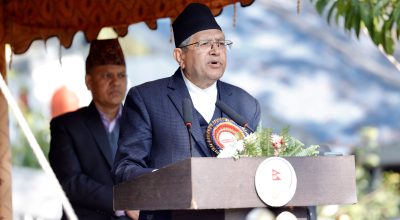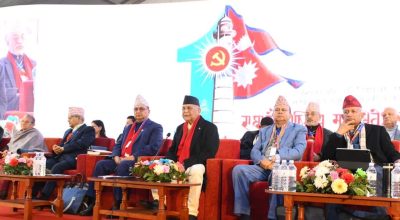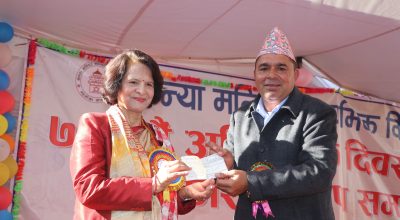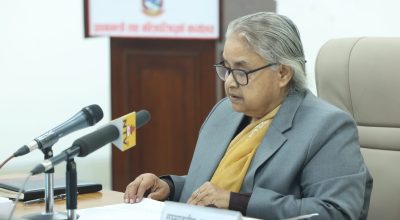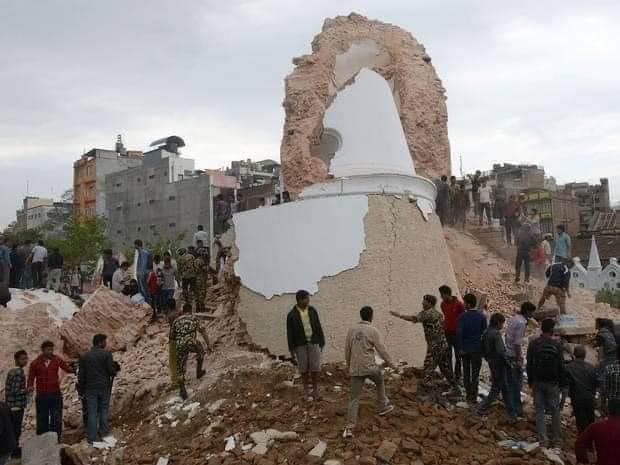
Kathmandu, April 24: Nepal’s seismic vulnerability is highlighted by its history of frequent and devastating earthquakes. Over the past 52 years, from 1970 to 2022, the region experienced 843 earthquakes with magnitudes ranging from 3 to 5 on the Richter scale, 121 earthquakes between 5 and 6, 11 between 6 and 7, and two significant tremors between 7 and 8.
The Sudurpaschim and Karnali provinces are particularly prone to seismic activity, with a notable seismic gap of 500 years indicating potential for future large-scale earthquakes. Recent events include a magnitude 6.6 earthquake in Doti in 2022, which resulted in six fatalities and a 6.3 magnitude quake in Bajhang in 2023 that claimed one life. More tragically, a 6.4 magnitude quake in Jajarkot in 2023 resulted in 154 deaths.
The 2015 Gorkha earthquake, a major event with a 7.8 magnitude, occurred at 11:56 am local time with its epicenter in Barpak, Gorkha. This disaster resulted in 8,790 deaths and 22,300 injuries. The quake caused extensive damage to 498,852 private homes, 7,553 educational buildings, 753 heritage sites, 1,197 health facilities, 383 security buildings, and disrupted 3,212 drinking water networks. With a total national budget of 11.8 billion USD in 2015, the earthquake represented a significant economic setback, with damages amounting to 7 billion USD. Its timing during a holiday likely prevented a higher casualty rate, as 19,500 classrooms were destroyed which could have been catastrophic had schools been in session.
In the aftermath of the 2023 Jajarkot earthquake, it was established that 75,517 households in Jajarkot and West Rukum were affected, necessitating significant reconstruction efforts. With the cost of rebuilding a single house estimated at 500,000 rupees, the financial requirement for private homes alone could exceed 35 billion rupees. Despite these needs, nearly half a year has passed since the earthquake, and none of the affected households have received the second installment required to build temporary shelters, indicating that reconstruction could take several years.
A comparison of post-disaster housing reconstruction in South Asia shows varied response times and effectiveness. Pakistan and Gujarat, India, formed their respective emergency reconstruction agencies, the EERA and GSDMA, within two weeks of their disasters. In contrast, Nepal took eight months to establish the National Reconstruction Authority (NRA). Despite this delay, Nepal managed to complete 85% of its reconstruction within six years, while Pakistan achieved 96% in five years and Gujarat 94% in the same period. This indicates that while reconstruction efforts can be slow and fraught with challenges, substantial progress is achievable over time. The reconstruction process following the Jajarkot earthquake is expected to be lengthy, reflecting broader regional trends in disaster recovery.
These facts also highlight the complexities of the reconstruction process, which often requires considerable time. Thus, it’s crucial for people to have temporary shelter before the onset of the monsoon season.
Let’s have a look at Jajarkot earthquake case. In the aftermath of the earthquake in Jajarkot and West Rukum, the rapid response by the government to distribute the first installment of funds for temporary shelter construction provided initial relief to the affected families. This aid was crucial for beginning the process of rebuilding, distributed with minimal documentation to expedite relief. However, this initially streamlined process has led to significant complications in distributing the second installment of aid, primarily due to the new requirement for concrete documentation, including land ownership certificates.
This documentation requirement has unveiled a critical issue: an inflated number of beneficiaries, significantly higher than the actual number of households recorded before the earthquake. For instance, in Jajarkot, the count of beneficiary households post-earthquake rose to 42,524, compared to the 37,466 households registered in CBS census 2021. This discrepancy is largely attributed to local governments possibly inflating numbers for political interests, compounding the challenge of aid distribution.
As a result, more than Rs 50 crores allocated for the second installment in both districts remains unclaimed, trapping many families who had started shelter construction in a cycle of debt, having taken out high-interest loans in anticipation of further government aid. The delay has placed these families in a precarious financial and emotional state, exacerbated by the approaching monsoon season which adds urgency to complete the construction of shelters to avoid further hardship.
Living conditions within these temporary shelters present their own set of challenges. Constructed predominantly from zinc sheets, the shelters are subject to extreme temperatures, becoming unbearably hot during the day and uncomfortably cold at night. Additionally, the design of these shelters does not accommodate the needs of larger families, forcing them into cramped and inadequate living spaces. The lack of privacy and security is particularly challenging for women and girls, who have no safe room to escape increasing their vulnerability to domestic violence in stressful living conditions.
The pressing need for a revised approach to both the aid distribution process and the design and construction of temporary shelters is evident. The government must address the inflated beneficiary counts, ensure the swift disbursement of the second installment, and consider the actual living and safety needs of the affected populations. Only through a comprehensive and coordinated response can the well-being of earthquake-affected families be effectively prioritized, helping them to rebuild their lives with dignity and security in the face of ongoing challenges.
[Writer is chairperson, Disaster Preparedness Network (DPNet)]







